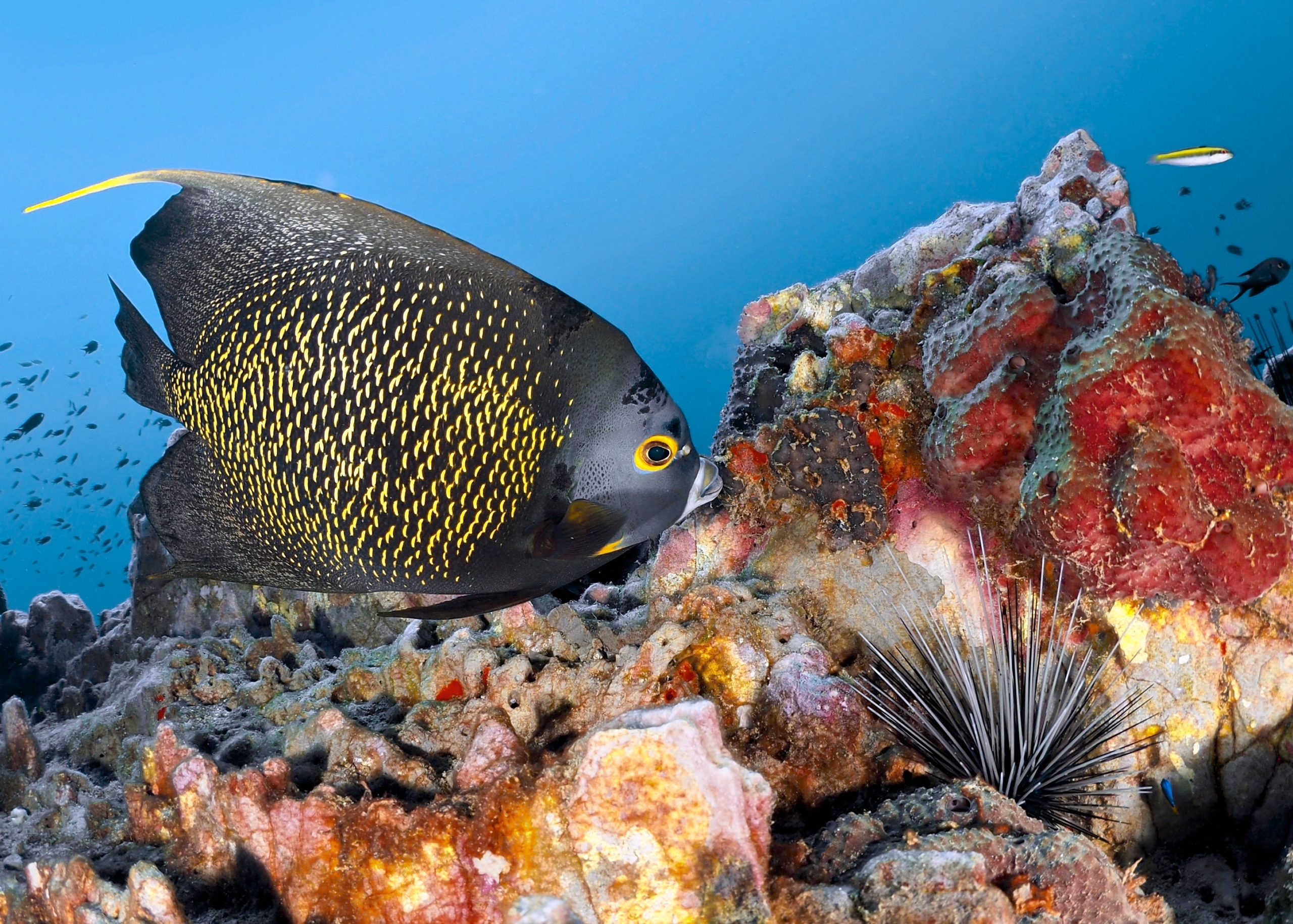
Perfect Partners: Love in the Sanctuaries
Love is in the air (and the water)! How do ocean animals show they care? Let’s dive in and find out:
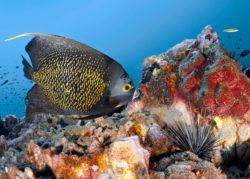
Photo credit: Stan Schone
Pair-bonding for life: Monogamous pairing is fairly rare in the ocean, but it does happen. French angelfish are one of the few monogamous fish species, and this lifestyle helps them defend one another and their territory from other fish. How do we know they’re monogamous? Scientists and divers have observed individuals spending extended amounts of time together, just like human couples! They reproduce with only each other annually, though fish spend less time investing in their young than mammals, so they get to enjoy empty nesting together fairly quickly.
Sea otters are another example of monogamy in the marine environment, and one of few marine mammals that lives this way. The live in family groups that do pretty much everything together and adults pair off. Sea otter parents care for their pups while older offspring take care of their younger siblings. This could make for a great family sitcom!
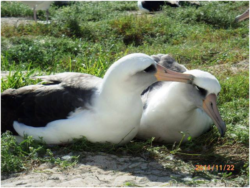
Photo credit: B. Wolfe/USFWS
Sophisticated courtship rituals: Courtship behavior takes many forms in the animal kingdom, especially in the marine environment. Albatross are a shining example of sophisticated courtship rituals to earn a dedicated mate for life. In their juvenile years, albatross spend years observing, learning, and practicing their courtship rituals to one day attract their lifelong partner. Albatross courtship includes elaborate dance characteristically including foot tapping, pointing their necks and beaks high into the sky, extending their wings, and calling to the sky. Albatrosses can dance with multiple partners as they decide on a partner, but once they match, they stay together faithfully until death do they part!
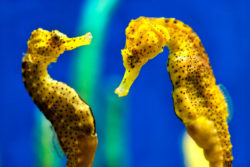
Photo credit: Romain Guy
Mates for a season: Many marine species bond with a mate that only lasts a single reproductive season (or until a more attractive mate comes along). Seahorses are a prime example. Since individuals are spread out and can’t swim that well, it’s advantageous for seahorses to choose one mate per season. Potential mates court for several days through dance rituals like mirroring each other’s movements, swimming side-by-side in unison, and circling one another. Once they mate, females place as many as 1,500 eggs in a small pouch on the male’s body where they’re incubated for about 45 days. Females check on her mate and eggs daily. Once the eggs hatch, the hatchlings become independent, and everyone goes their separate ways, the seahorses are no longer considered paired and will find another mate the following season.
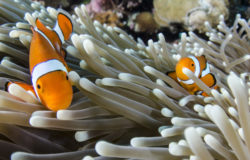
Photo credit: Amanda Cotton/Coral Reef Image Bank
Symbiosis: It’s not a romantic relationship, but symbiosis is an important one in the animal kingdom. Clownfishes and anemones have one of the most well-known partnerships of all. Clownfish have to shelter themselves and their eggs within an anemone to survive, and anemones benefit from clownfish who remove parasites from their bodies and provide nutrients for the anemone to feed on from its leftovers and waste. This relationship is so strong that clownfish have evolved a slimy mucus layer on their bodies that protect them from the stinging cells on the anemone’s tentacles.
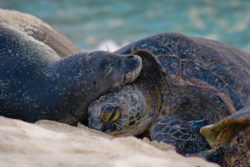
Photo credit: Papahānaumokuākea Marine National Monument
Interspecies “friendship”: Not all interspecies interactions are harmful or beneficial at their face. Sometimes, species that occupy the same area just coexist and enjoy the moment. One example is that of the Hawaiian monk seal and sea turtles in the Hawaiian Islands. These iconic animals are often seen resting near or on one another, especially in remote areas like the beaches of Papahānaumokuākea Marine National Monument in the northwestern Hawaiian Islands. Beyond being perfect napping partners, these two also share many of the same threats such as entanglement in marine debris and habitat loss. Hawaiian monk seals and all species of sea turtles in US waters are listed as either threatened or endangered under the Endangered Species Act.
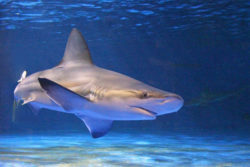
Photo credit: The Maritime Aquarium at Norwalk
A life of solitude: Some species thrive in their independence. Sandbar sharks, cabezon, and requiem sharks are notable examples. They migrate seasonally in response to changes in the environment and prey availability. Depending on the species and gendered behavior, they may spend some or all of their time alone except for breeding opportunities. In solitary species, the motivation is sometimes territoriality and in others it’s just that individuals are separated in time and space, so they’ve adapted to survive without the advantages of larger social groups.
